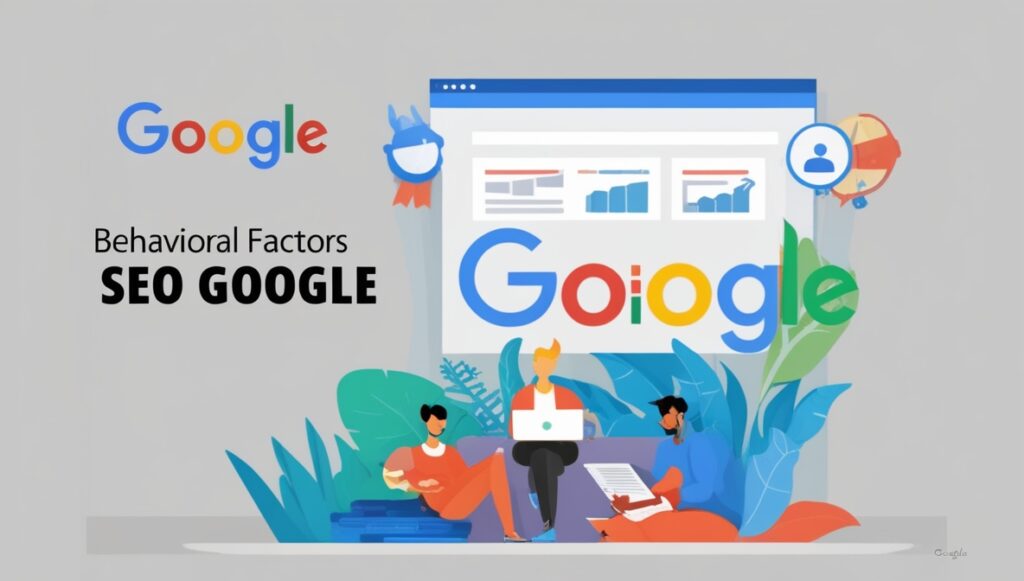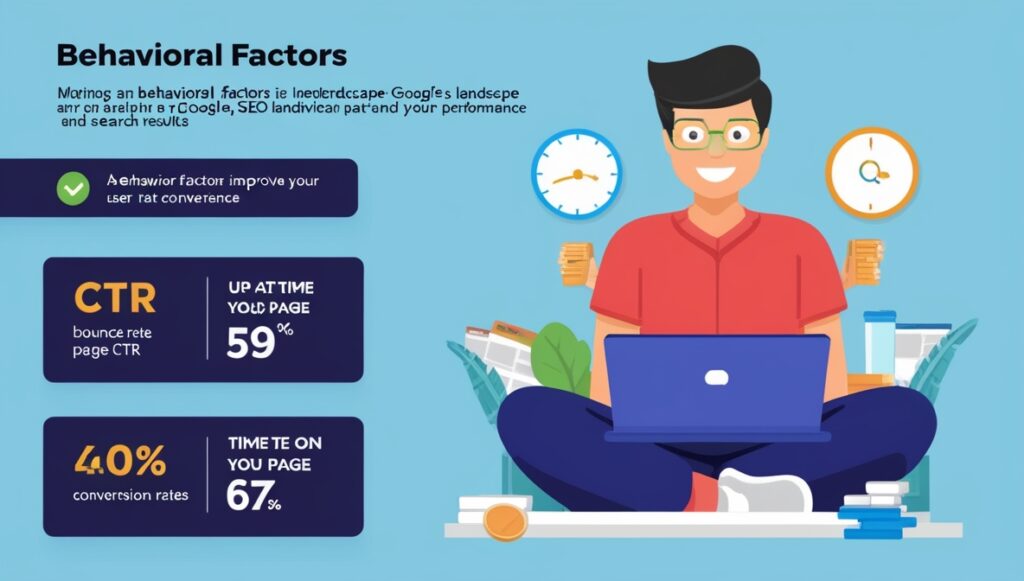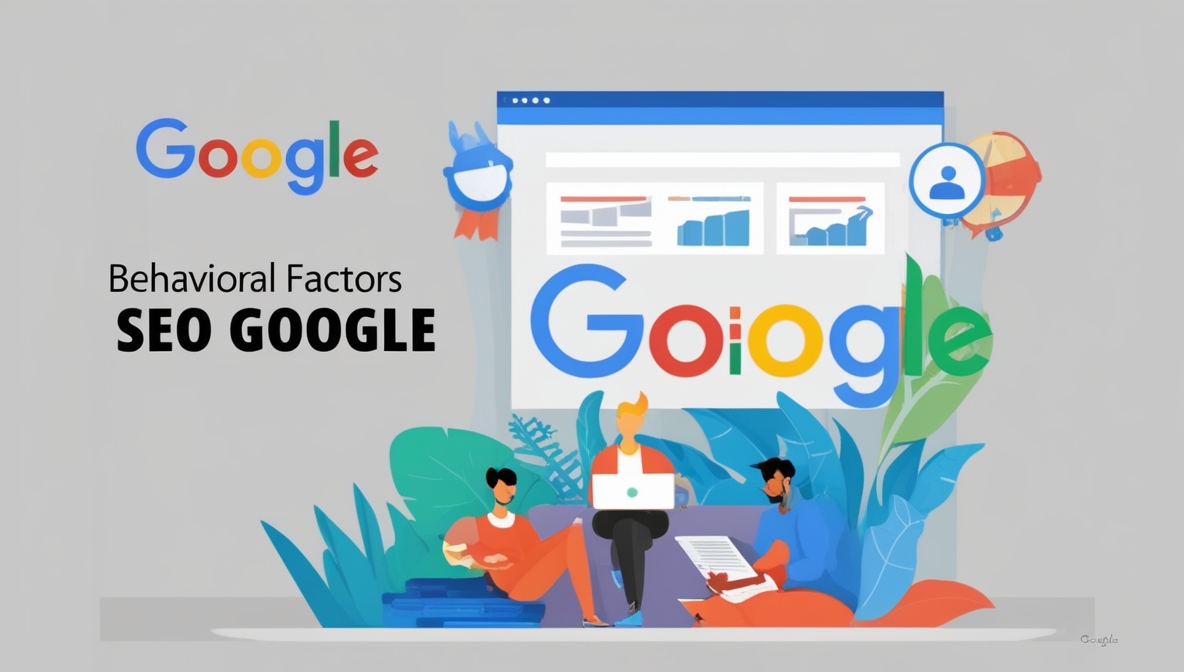
In the ever-evolving landscape of SEO, understanding how Google evaluates and ranks websites is crucial for any business looking to improve its online visibility. While traditional SEO factors like backlinks and content quality remain essential, there’s an emerging element that is increasingly influencing rankings—behavioral factors SEO Google. These metrics, derived from user interactions on your website, are now a critical part of how Google determines the relevance and quality of your web pages.
This article explores the role of behavioral factors in SEO, how Google uses them to rank websites, and what you can do to leverage this information to improve your site’s performance.
What Are Behavioral Factors in SEO?

Behavioral factors refer to the ways in which users interact with your website, and these interactions provide Google with data on how engaging and relevant your site is to visitors. Google uses this data to assess user satisfaction, which in turn affects your site’s rankings in the search results. The better your website’s user experience, the more likely it is to rank higher in the SERPs.
Behavioral factors include metrics like:
- Click-Through Rate (CTR)
- Time on Page
- Bounce Rate
- Conversion Rate
- Frequency of Visits
- Channel of Navigation
These signals tell Google whether users are finding what they need, staying on your site, and returning for more. If users are leaving quickly, or not engaging with your content, Google may interpret this as a sign that your website doesn’t offer the value that it promises.
How Google Uses Behavioral Factors to Rank Websites
It’s no secret that Google’s ranking algorithms are complex and multifaceted. They incorporate over 200 different factors, and behavioral signals are now considered a major component of the algorithm. But how exactly does Google use these factors to determine a site’s ranking?
1. Click-Through Rate (CTR)
Click-through rate refers to the percentage of users who click on your website link after seeing it in search results. A high CTR indicates that your title, meta description, and overall listing are appealing to searchers, which suggests that your page is relevant to their query.
Google uses CTR as a ranking factor because it helps determine which pages are the most relevant and valuable for a given search query. When users click on your website, it sends a strong signal to Google that your content is satisfying the searcher’s intent.
2. Time on Page & Dwell Time
Time on page refers to how long users stay on a web page once they click through to it. A higher time on page generally means that the user is engaged with your content, which is a positive signal to Google. This metric indicates to Google that your content is high-quality and engaging enough to keep users interested.
Dwell time, a related metric, measures the amount of time between when a user clicks on a search result and when they return to the search results page. A longer dwell time suggests that the user has found what they were looking for, while a quick return could indicate that your page didn’t provide the right answer.
3. Bounce Rate
Bounce rate is the percentage of visitors who leave your site after viewing only one page. A high bounce rate can signal that your landing page or content isn’t engaging enough, causing users to quickly navigate away. This is a negative signal for Google, as it suggests that your page isn’t relevant or useful for visitors.
On the other hand, a low bounce rate, combined with high engagement, indicates that users are finding what they need on your site and are likely exploring other pages.
4. Conversion Rate
A high conversion rate is a clear indicator of user satisfaction. When users convert—whether it’s making a purchase, filling out a contact form, or subscribing to a newsletter—Google interprets this as a sign that your website is highly relevant and meets the needs of your visitors. The conversion rate is thus a critical behavioral metric that can have a direct impact on your rankings.
5. Frequency of Visits
Repeat visitors are a strong signal of content quality and relevance. If users keep returning to your website, it shows Google that your content is valuable, informative, and engaging. Frequent visits suggest to Google that your website is a trusted resource in your niche, which can positively influence your SEO rankings.
6. Channel of Navigation
The way users find and navigate your website also provides insights into its popularity and relevance. If users find your site through organic search, social media, or other external channels, Google takes these into account when evaluating your site’s authority and user satisfaction.
Why Behavioral Factors Matter in SEO
Incorporating user behavior data into SEO is part of Google’s ongoing efforts to create a more user-centric search experience. Google’s ultimate goal is to provide the most relevant and useful results for its users, and behavioral factors give Google a clear indication of which websites meet this criterion.
“It’s simply a set of programs that are constantly updated to rank web pages in the organic listings in a consistently fair manner. The user behavior data that Google relies on includes click-through rate, duration on the web page, conversion rate, bounce rate, frequency of visits, the channel of navigation, and more.” These factors give Google a more complete picture of how well a webpage satisfies user intent and enhances the overall search experience.
By optimizing your website for these behavioral factors, you not only improve your rankings but also create a better experience for your visitors. This, in turn, can lead to increased traffic, more conversions, and ultimately higher revenue for your business.
How to Improve Behavioral Factors for Better SEO
Now that you understand the importance of behavioral factors, it’s time to look at how you can optimize your site to improve these metrics and, in turn, boost your rankings.
1. Improve Your Content Quality
Google places a high value on high-quality, relevant content. To improve behavioral factors like time on page and bounce rate, focus on creating content that directly answers the questions your audience is searching for. This could include blog posts, videos, infographics, or detailed guides that are well-researched and engaging.
2. Optimize Your Website’s User Experience (UX)
A positive user experience can significantly reduce your bounce rate and increase time on page. This includes ensuring your website is mobile-friendly, fast-loading, easy to navigate, and aesthetically appealing. A seamless, intuitive experience encourages users to stay longer and engage with more content.
3. Write Compelling Meta Descriptions and Titles
Your title tags and meta descriptions are the first thing users see in the search results. Craft these elements carefully to ensure they accurately describe your content and encourage users to click. A compelling title with a clear value proposition can boost your CTR, a critical ranking factor.
4. Encourage Internal Linking
Internal linking helps guide users through your website, increasing their time on page and reducing bounce rate. When users click on additional links within your site, it signals to Google that your content is interconnected and valuable.
5. Monitor Analytics and Test Regularly
Use tools like Google Analytics, Google Search Console, and heatmaps to track user behavior on your website. By analyzing metrics such as bounce rate, time on page, and conversions, you can identify areas for improvement. Regular A/B testing of landing pages can also help optimize performance.
Conclusion

Behavioral factors are an essential part of the modern SEO landscape, influencing Google’s rankings in significant ways. By focusing on metrics like CTR, bounce rate, time on page, and conversion rates, you can improve both your website’s user experience and its performance in search results.
At Dust Digital Marketing Ltd., we understand the importance of these factors and can help you optimize your website for both users and search engines. Our expert SEO strategies are designed to enhance user engagement, improve behavioral signals, and boost your search rankings. Contact us today to learn how we can help your business succeed online!
Call to Action
Ready to boost your website’s SEO performance and improve your search rankings? Dust Digital Marketing Ltd. offers tailored SEO services to help businesses like yours leverage the power of behavioral factors. Reach out to us for a comprehensive SEO audit and get started on your path to higher rankings today!

